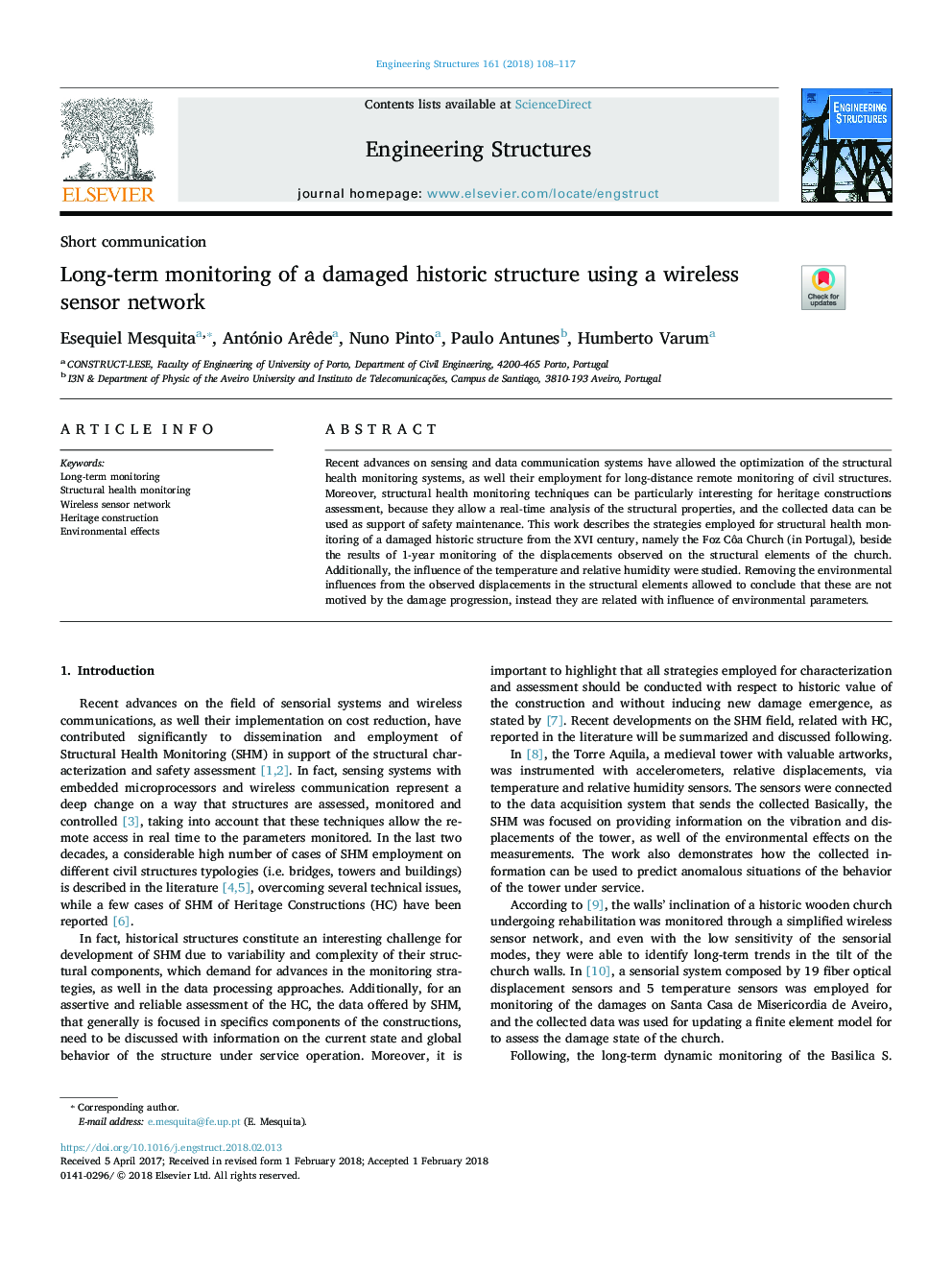| Article ID | Journal | Published Year | Pages | File Type |
|---|---|---|---|---|
| 6738116 | Engineering Structures | 2018 | 10 Pages |
Abstract
Recent advances on sensing and data communication systems have allowed the optimization of the structural health monitoring systems, as well their employment for long-distance remote monitoring of civil structures. Moreover, structural health monitoring techniques can be particularly interesting for heritage constructions assessment, because they allow a real-time analysis of the structural properties, and the collected data can be used as support of safety maintenance. This work describes the strategies employed for structural health monitoring of a damaged historic structure from the XVI century, namely the Foz Côa Church (in Portugal), beside the results of 1-year monitoring of the displacements observed on the structural elements of the church. Additionally, the influence of the temperature and relative humidity were studied. Removing the environmental influences from the observed displacements in the structural elements allowed to conclude that these are not motived by the damage progression, instead they are related with influence of environmental parameters.
Keywords
Related Topics
Physical Sciences and Engineering
Earth and Planetary Sciences
Geotechnical Engineering and Engineering Geology
Authors
Esequiel Mesquita, António Arêde, Nuno Pinto, Paulo Antunes, Humberto Varum,
